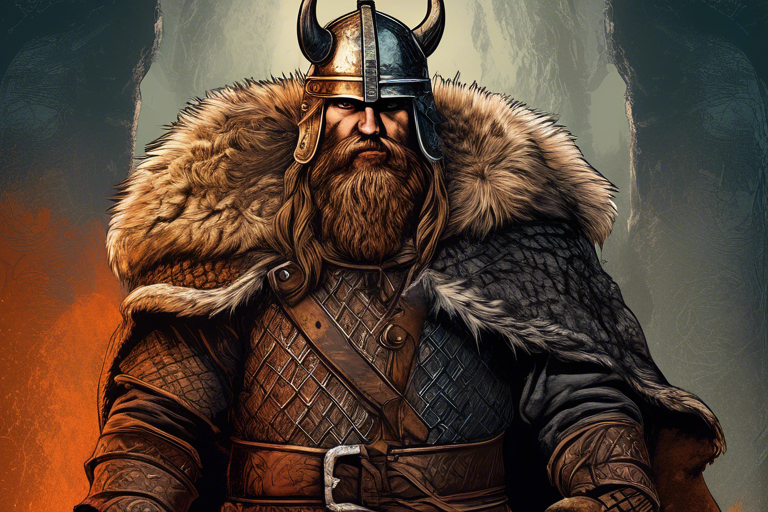The Vikings, often romanticized as fierce warriors navigating the seas with horned helmets and battle axes, have left an indelible mark on history. Beyond their conquests and exploration, the attire of the Norse people has played a significant role in shaping our perception of these seafaring warriors. This article delves into the evolution of Viking costumes, tracing their roots in history and exploring their vibrant presence in contemporary pop culture.
Historical Roots: Functional Elegance
The historical accuracy of Viking costumes is a subject that has long fascinated scholars and enthusiasts alike. Far from the horned helmets often depicted in popular culture, authentic Viking attire was a testament to functional elegance. The Vikings, living in the harsh climates of Scandinavia, crafted their costumes with a keen understanding of practicality and necessity.
Wool, sourced from the abundance of sheep in the region, was the primary fabric. Its insulating properties made it ideal for withstanding the cold temperatures of the North. Earthy tones such as browns, greens, and grays dominated their wardrobe, mirroring the landscapes they inhabited. The iconic longcloak, made from finely woven wool, served both as protection against the elements and a versatile garment for various occasions.
Metal brooches, clasps, and other accessories were not mere embellishments; they were functional elements that held garments together. These metal pieces often featured intricate patterns and symbols, adding a layer of cultural significance to Viking attire. The use of fur, leather, and metal created a harmonious ensemble that spoke to the Vikings' adaptability to their environment and their resourcefulness in crafting garments that were both practical and aesthetically pleasing.

Symbols and Stories Woven in Fabric
One of the distinctive features of Viking costumes was the intricate patterns woven into the fabric. The practice of "trouser twining," where contrasting threads were skillfully woven to create diagonal patterns, not only added structural strength but also served as a visual language. These patterns conveyed stories of lineage, societal roles, and personal achievements.
Metalwork on accessories such as brooches became a canvas for symbolic representation. Animals, geometric shapes, and mythological motifs adorned these pieces, reflecting the Vikings' connection to nature and their rich cultural heritage. The combination of patterns and symbols transformed Viking costumes into more than just clothing; they became a form of storytelling, with each garment carrying the narratives of the wearer.
The Vikings in Action: Practical Costumes on the Move
Viking costumes were not static ensembles; they were designed for a mobile and active lifestyle. The loose-fitting trousers allowed for ease of movement, crucial for a society engaged in farming, fishing, and seafaring. Footwear, often made from leather, provided protection and durability for the varied terrains encountered during their journeys.
The iconic longcloak, with its versatile design, served as an essential garment for the Vikings' dynamic lifestyle. Whether facing the harsh winds of the North or adapting to the changing temperatures, the longcloak proved to be a practical and stylish solution. The Vikings' attire was a reflection of their adaptability, allowing them to navigate the challenges of their environment with both functionality and flair.
Evolution in Artistic Depictions: Shaping Perceptions
The evolution of Viking costume depictions in art and historical records has played a crucial role in shaping our perception of these ancient seafarers. Early artistic representations often leaned towards the fantastical, incorporating exaggerated features such as horned helmets that were not historically accurate. These depictions, though intriguing, did not align with the practical and functional nature of authentic Viking attire.
As scholarship advanced and a more accurate understanding of Viking history emerged, artistic representations began to shift towards a more realistic portrayal of their costumes. Historical reenactments and archaeological discoveries further fueled this shift, providing valuable insights into the materials, colors, and designs that comprised Viking attire.
Vikings in Modern Popular Culture: A Stylish Resurgence
The fascination with Vikings has not waned over the centuries, and their costumes continue to be a source of inspiration in modern popular culture. Television series, movies, and even fashion runways have embraced the allure of Viking fashion, albeit with varying degrees of historical accuracy.
Television series like "Vikings" brought Viking costumes to the forefront of popular culture. The costumes in these productions, while stylized for dramatic effect, introduced a new generation to the rugged elegance of Viking attire. The intricacies of metalwork, the earthy color palette, and the versatility of garments became visual cues that captured the imagination of audiences worldwide.
In the realm of fashion, there has been a resurgence of interest in Norse-inspired designs. Runways have seen the incorporation of elements such as fur accents, leather details, and metal accessories reminiscent of Viking attire. This modern interpretation pays homage to the timeless appeal of Viking fashion, seamlessly blending historical influences with contemporary style.
Cosplay and Viking Enthusiasts: Bringing History to Life
The world of cosplay has provided a unique platform for enthusiasts to breathe life into historical costumes, including those inspired by the Vikings. From meticulously crafted wool tunics to intricately designed metal accessories, cosplayers have embraced the challenge of recreating authentic Viking attire.
These dedicated individuals delve into historical research, studying archaeological findings and scholarly works to ensure accuracy in their costumes. The craftsmanship and attention to detail exhibited by Viking cosplayers not only showcase their passion for history but also contribute to a broader appreciation for the intricacies of Viking fashion.
Conclusion: A Timeless Legacy
The evolution of Viking costumes from historical authenticity to stylized depictions in pop culture demonstrates the enduring allure of Norse fashion. The functional elegance, symbolic storytelling, and practical adaptability embedded in Viking attire continue to captivate audiences across the globe. From historical reenactments to modern interpretations on runways, the legacy of Viking costumes lives on, reminding us that the threads of history are woven into the very fabric of our cultural fascination. The Vikings, with their timeless and stylish legacy, remain an ever-present influence in the tapestry of human fashion history.


No comments yet